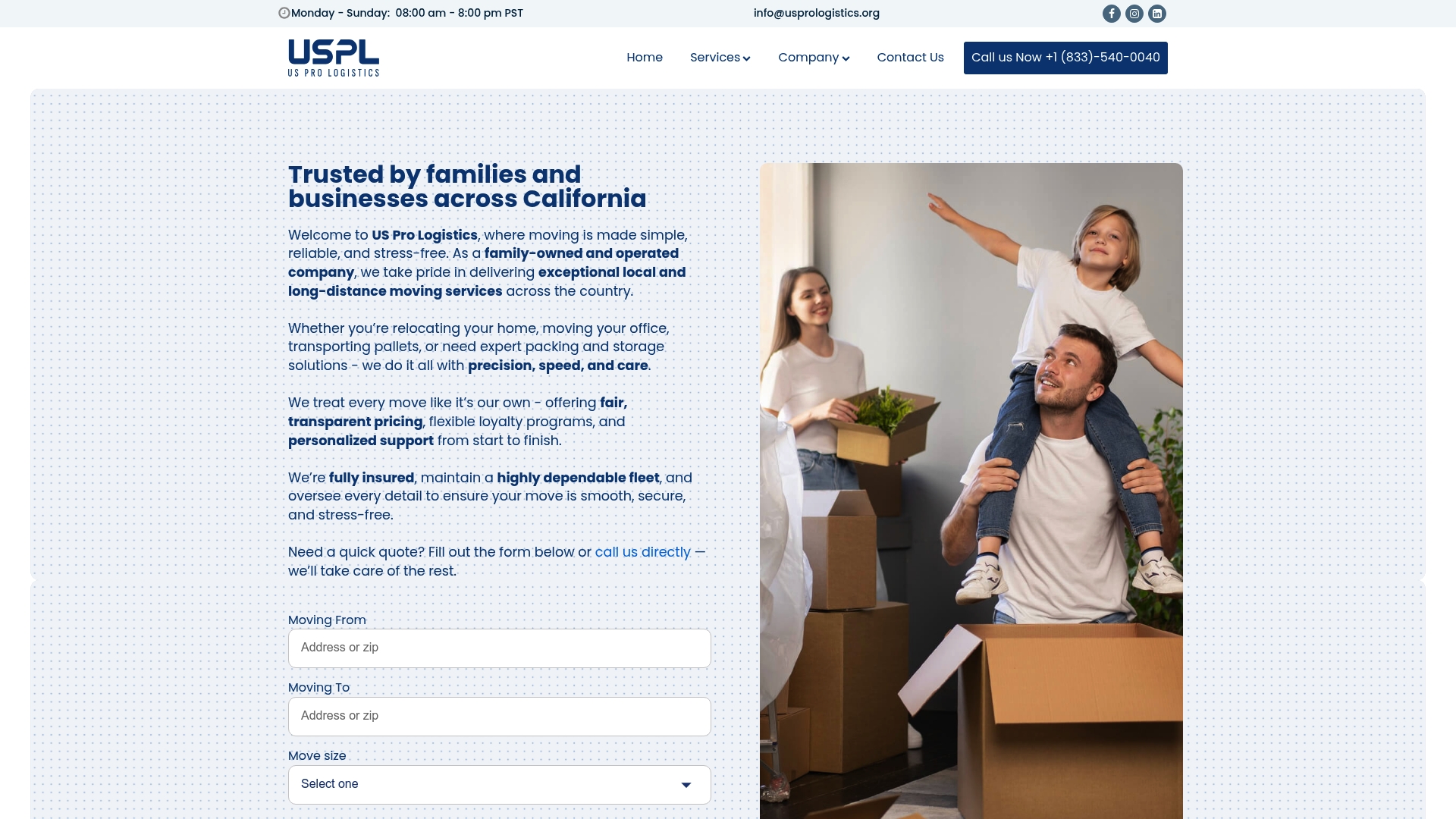
Moving an office in California sounds daunting with tight deadlines, IT headaches, and the threat of lost productivity. Most expect chaos and downtime as an unavoidable price. Yet studies show that with careful planning and the right approach, companies that invest in a comprehensive relocation strategy can cut transition disruptions by nearly 50 percent. It’s not just possible to relocate smoothly—it can actually become a launchpad for greater workplace efficiency and employee satisfaction.
| Takeaway | Explanation |
|---|---|
| Conduct a Thorough Assessment First | Assess current assets and requirements before moving, including forming a dedicated relocation team. |
| Choose Reliable Movers with Credentials | Vet moving companies for licensing, insurance, and experience to avoid logistical challenges. |
| Communicate Transparently with Employees | Regular updates and clear instructions will help alleviate anxiety and improve transition flow. |
| Plan for Operational Continuity and Technology | Ensure minimal downtime by meticulously planning IT transitions and workspace setup for seamless operations. |
| Prioritize Employee Adaptation and Support | Offer training, resources, and feedback channels to help employees acclimate to their new environment. |
Successful office relocation requires meticulous planning and strategic execution. Without a comprehensive approach, businesses risk significant disruptions, financial losses, and employee stress. This step by step guide will walk you through the critical phases of planning a seamless office move in California.
Before initiating any physical move, conducting a thorough organizational assessment is crucial. According to the Society for Human Resource Management, developing a robust relocation program involves multiple strategic considerations. Start by forming a dedicated relocation team responsible for coordinating all aspects of the move. This team should include representatives from facilities management, HR, IT, and senior leadership.
Key preparatory steps include:
Detailed logistics planning separates successful moves from chaotic transitions. The University of California Berkeley’s moving checklist emphasizes the importance of systematic file management and early service provider engagement. Begin by categorizing existing equipment and documents into clear groups: items to move, items to dispose of, and items requiring special handling.
Technology infrastructure demands particular attention. Coordinate with your IT department to ensure:
Employee engagement is paramount during office relocations. Transparent, frequent communication helps mitigate anxiety and ensures smoother transitions. Develop a comprehensive communication plan that includes:
Consider read more about our comprehensive office moving strategies to further refine your relocation approach. By following these systematic steps and maintaining open communication, your California office can experience a smooth, efficient move that minimizes disruption and maximizes operational continuity.
Remember that every successful office relocation begins with careful planning, attention to detail, and a proactive approach to managing change.
To provide a clear overview of the major steps involved in planning an office relocation, the following table breaks down each phase and its key actions:
| Step | Key Actions |
|---|---|
| Initial Assessment & Preparation | Asset inventory, define space needs, set budget, build relocation team |
| Logistics & Operational Planning | Categorize items, plan IT move, engage service providers |
| Execution & Employee Communication | Communicate updates, instruct packing, share moving day details |
| Choosing Movers | Vet credentials, evaluate services, review contracts |
| Settling In & Productivity Restoration | Optimize workspace, connect tech, support employees |
Selecting the appropriate moving company can make the difference between a smooth office relocation and a logistical nightmare. The right professional movers will minimize downtime, protect your valuable equipment, and ensure a seamless transition to your new workspace.
Before committing to any moving service, thorough vetting is crucial. According to the California Attorney General’s Office, businesses should obtain multiple in-person written estimates from at least three moving companies. This approach allows for comprehensive price comparison and helps identify potential red flags.
Key credentials to verify include:

The Federal Motor Carrier Safety Administration emphasizes the importance of understanding a moving company’s specific capabilities. Not all movers are equipped to handle complex office relocations with specialized equipment and technology infrastructure.
Critical service considerations include:
Financial clarity is paramount when selecting a moving partner. Request detailed, written estimates that break down all potential costs. Learn more about our transparent moving estimates to understand what to expect during your office relocation.
Essential contract elements to review:
By carefully evaluating potential movers across these dimensions, businesses can select a reliable partner that transforms a potentially stressful relocation into a smooth, efficient process. Remember that the cheapest option is rarely the best when it comes to protecting your company’s assets and maintaining operational continuity.
Selecting the right moving company is crucial for a smooth office relocation. This comparison table summarizes core criteria to evaluate when choosing office movers in California:
| Criteria | What to Look For |
|---|---|
| Licensing & Regulatory | CPUC registration, federal compliance |
| Insurance Coverage | Liability and cargo insurance in writing |
| Experience & Specialization | Years in commercial moves, tech/equipment expertise |
| Service Capabilities | IT handling, packing/unpacking, flexible scheduling |
| Cost & Contract Clarity | Detailed estimates, item inventory, clear additional charges |
Office relocations for businesses and government agencies require significantly more complex planning and execution compared to standard moves. These transitions involve intricate logistical challenges, legal considerations, and strategic planning that demand specialized approaches.
Navigating the legal landscape of office relocation is crucial for businesses and agencies. According to the Society for Human Resource Management, organizations must develop comprehensive written relocation agreements that clearly outline responsibilities, protect employee information, and address potential tax implications.
Key legal considerations include:
The Canadian Centre for Occupational Health and Safety emphasizes the critical importance of comprehensive facility assessment during relocation. Organizations must conduct thorough evaluations of new workspace requirements, ensuring compliance with accessibility standards, emergency response protocols, and operational efficiency.
Critical operational planning elements include:
Successful relocations extend beyond physical movement of assets. The U.S. General Services Administration highlights the importance of comprehensive employee support programs during organizational moves.
Employee transition strategies should address:
Explore our comprehensive agency relocation support services to understand how we can streamline your organization’s move. By approaching office relocation as a strategic initiative rather than a mere logistical challenge, businesses and agencies can transform potential disruptions into opportunities for improved operational efficiency and workplace innovation.
Transitioning to a new office environment requires strategic planning to minimize disruption and rapidly restore organizational productivity. The initial weeks following an office relocation are critical in establishing a new operational rhythm and ensuring employee comfort and efficiency.
Research published in PLOS ONE highlights the significant impact of workplace environment on employee health and productivity. The study reveals that strategic design choices can substantially reduce workplace stress and improve overall employee performance. Organizations should focus on creating an environment that supports both individual and collaborative work styles.
Key strategies for workspace optimization include:
A comprehensive technological transition is crucial for maintaining operational efficiency. Prioritize seamless IT infrastructure migration and immediate restoration of communication systems. This involves:
The International Journal of Environmental Research and Public Health emphasizes the psychological aspects of workplace relocation. Research indicates that different work characteristics significantly impact employee productivity during transitions. Some employees may experience decreased productivity, particularly those engaged in high-concentration tasks.
To support employee adaptation:
Discover our comprehensive post-move support strategies to ensure a smooth transition. By approaching office relocation as a holistic process that addresses physical, technological, and psychological aspects, organizations can transform a potentially disruptive event into an opportunity for renewed energy and improved workplace dynamics.
Remember that successful settling-in is not about immediate perfection, but about creating an adaptive, supportive environment that allows your team to gradually find their most productive rhythm in the new space.

Planning an office relocation involves several key steps: conducting a thorough initial assessment, logistics and operational planning, execution and employee communication, and post-move settling in. Form a dedicated relocation team, establish a detailed timeline, and ensure clear communication throughout the process.
Minimizing disruptions during an office move can be achieved by meticulously planning IT transitions, coordinating with reliable moving companies, and maintaining regular communication with employees to keep them informed about the moving process.
When selecting a moving company, evaluate their credentials and reliability, understand their service capabilities, and ensure cost transparency. Check for licensing, insurance, and experience in handling office relocations to protect your assets.
Supporting employees during the transition includes providing clear communication about the moving process, offering logistical assistance, facilitating training and orientation in the new workspace, and addressing any psychological concerns to help them adapt effectively.
Are you feeling overwhelmed by the details and potential risks of relocating your California office? Uncertainty around IT downtime, disrupted workflow, and employee anxiety can threaten your transition and slow productivity. This guide made it clear that moving an office is about much more than packing boxes. It is about protecting business continuity, ensuring regulatory compliance, and supporting your team every step of the way. You need a partner who understands every aspect of commercial relocation and delivers seamless, transparent moving solutions.

Let US Pro Logistics take the pressure off. Save valuable time, reduce disruption, and restore productivity quickly. Our team specializes in office relocations across California, including secure transport, IT system support, and post-move setup. Read more about our dedicated business moving services and experience the peace of mind that comes with a professional, locally operated team. If you want your move handled with care and urgency, contact us today to get started.
USDOT 3664256 This number is required for any company that operates commercial vehicles in interstate commerce (across state lines). It helps identify and track the safety performance and compliance of transportation companies.
MC 1268070 This number is specifically for companies involved in the transportation of goods or passengers for hire across state lines. It’s necessary for carriers operating in the moving industry and ensures they are authorized to operate as interstate carriers.